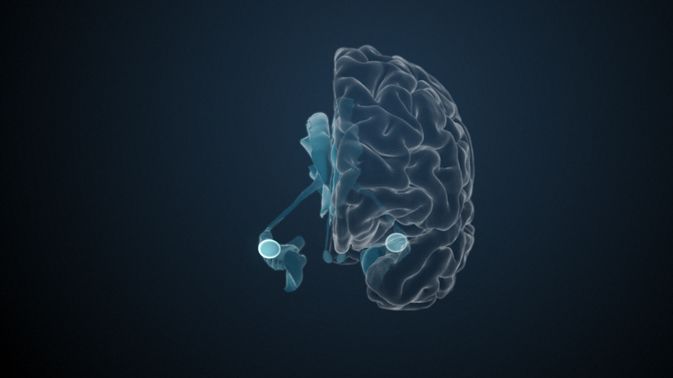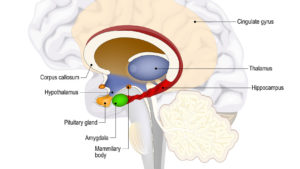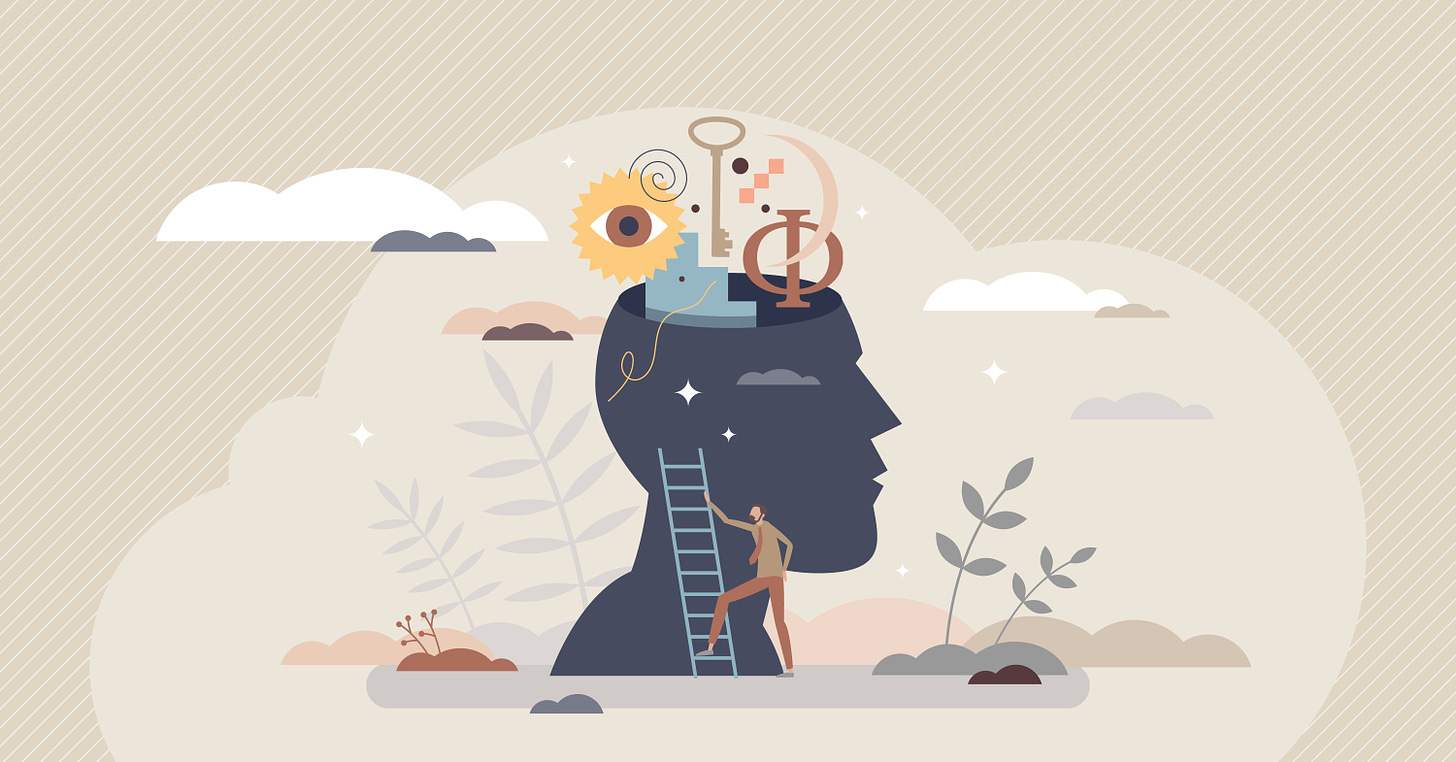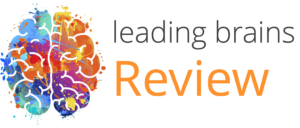Different areas of the brain are associated with empathy – this new research shows how brain regions synchronise to induce empathic responses.

Norepinephrine
Colloquially called adrenaline – a powerful activator in the brain
When we speak of adrenaline we think of high stress situations, positive and often negative. Norepinephrine is the neurotransmitter that is related to adrenaline, but not to be confused with the hormone, and it is related to attention, action, but also plasticity and learning.

The Sabre-Toothed Tiger jumps out from behind a bush and turns its large yellow eyes onto our friendly cavemen. The tiger gives a low rumbling growl and takes a cautious small step forward, seemingly ready to pounce at an instant. Our caveman, shocked, stands focusing on the tiger his whole body has been rocketed into a high state of alert and tension. His heartbeat has accelerated, his pupils have dilated, his senses have all pricked up and he has laser sharp vision. At this precise moment he is frozen waiting for the slightest abrupt movement which will spur his body into action. Either to launch is rudimentary spear at the tiger or evade and try to escape.
This is often how the primitive roots of our flight or fight response are portrayed – with a threat scenario. Slightly unrealistically: Neolithic man did not live in the same time period as sabre-toothed tigers, and we are adapted to live in the savannah, more likely, than the jungle. Nevertheless, it is easy to imagine, and we have all experienced these periods of shock or tension from simple activities like being surprised by a person jumping from behind a wall, to having a near car crash, to receiving shocking news. Our system activates and all sorts of bodily functions kick off a string of automated reactions. They sympathetic nerve system preparing the system, in very short periods of time, for heightened vigorous activity.
Adrenaline is usually associated with this, it is. But I’d like to give you a brief review of another major neurotransmitter and modulator, norepinephrine also known as noradrenaline. Whereas adrenaline is the hormone signalling responses across the body stimulated by the hypothalamic-pituitary-adrenocortical system norepinephrine is the neurotransmitter that may or may not be associated with the adrenaline response. Chemically they are similar.
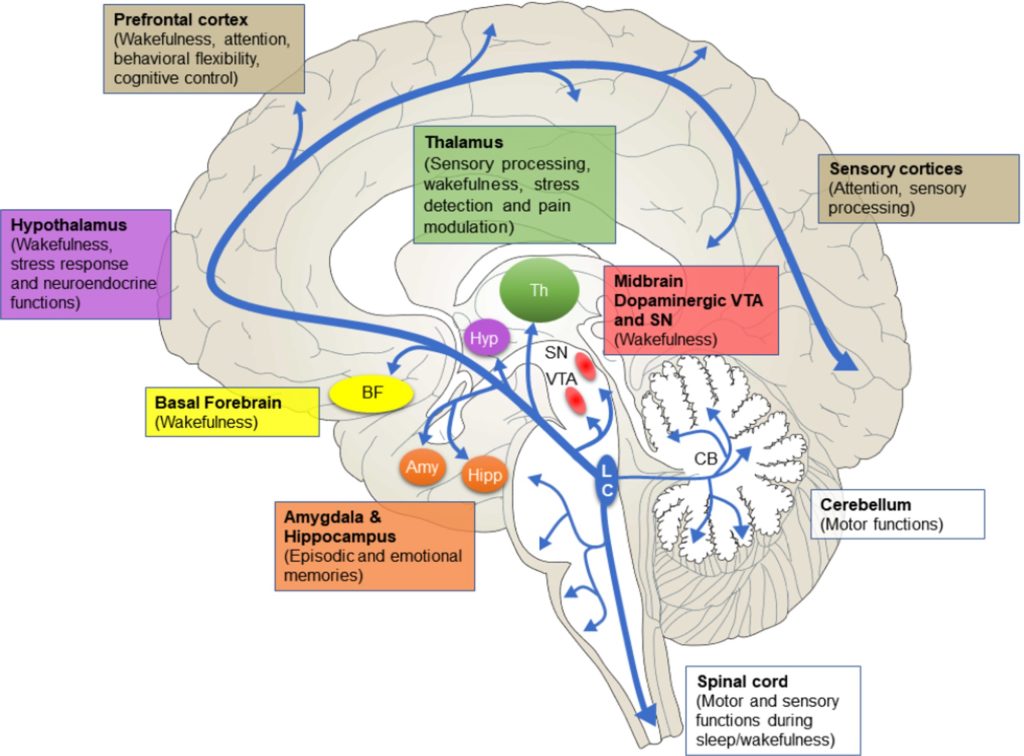
So, what does norepinephrine do in the brain? Well, if we take a quick sidestep into ADHD, we can see that there are a number of approaches to deal with ADHD but there are two main classes of drugs to help with attention deficits. One is related to the dopamine system which includes the famous, or infamous, Ritalin, a selective dopamine reuptake inhibitor. The others are related to stimulation and often target the norepinephrine system such as atomoxetine.
Norepinephrine is released mostly in the brain stem specifically in the Locus Coeruleus. Some of you may remember that this is an area that we focused on way back in lbR-2021-01 and is involved in attention. This norepinephrine circuit basically projects throughout the whole cortex as you can see from the diagram above. However, what you will also notice is that there are some similarities to Dopamine which I reviewed in last month’s issue lbR-20201-09.
So, the question is are dopamine and norepinephrine similar, different, or collaborative in their function?
The answer seems to be an irrevocable – probably interrelated! A review in 2020 noted how their functions are similar and they seem to operate in parallel on similar topics – however, we saw last month that dopamine is very strongly involved in the encoding of reward and motivation. It is therefore suitable to conjecture that adrenaline has an arousal and attention function and this complements dopamine. This thereby also stimulates encoding of significance be that of positive or particularly of negative and stressful events which are particularly powerful in the brain. The review also notes norepinephrine’s importance in plasticity and how this also functions in parallel with dopamine.
So, in summary, norepinephrine is a key transmitter that has wide-reaching impacts on the brain and operates closely with dopamine to guide attention, encode and interpret emotional significance, and in guiding learning●
References
Norepinephrine
Mather, M., Clewett, D., Sakaki, M., and Harley, C. W. (2016). Norepinephrine ignites local hotspots of neuronal excitation: How arousal amplifies selectivity in perception and memory. Behav. Brain Sci. 39. doi:10.1017/S0140525X15000667.
Moret, C., and Briley, M. (2011). The importance of norepinephrine in depression. Neuropsychiatr. Dis. Treat. 7. doi:10.2147/NDT.S19619.
Saboory, E., Ghasemi, M., and Mehranfard, N. (2020). Norepinephrine, neurodevelopment and behavior. Neurochem. Int. 135. doi:10.1016/j.neuint.2020.104706.
Schwarz, L. A., and Luo, L. (2015). Organization of the locus coeruleus-norepinephrine system. Curr. Biol. 25. doi:10.1016/j.cub.2015.09.039.
van der Linden, D., Tops, M., and Bakker, A. B. (2021). The Neuroscience of the Flow State: Involvement of the Locus Coeruleus Norepinephrine System. Front. Psychol. 12. doi:10.3389/fpsyg.2021.645498.
Dopamine vs Norepinephrine
Ranjbar-Slamloo, Y., and Fazlali, Z. (2020). Dopamine and Noradrenaline in the Brain; Overlapping or Dissociate Functions? Front. Mol. Neurosci. 12. doi:10.3389/fnmol.2019.00334.

